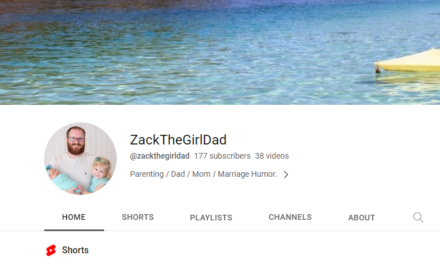A lot of work must happen before a content entrepreneur steps behind an organization’s podium or pops up on their virtual platform screen. Here are five things to do before you hit the public speaking stage.
1. Identify your speaking purpose: Before you tackle anything else, pick two or three reasons why you want to add public speaking to your service list. What do you want speaking to do for your content business?
That purpose will help determine the proper call to action. If your goal is to earn revenue, for example, you would focus on getting paid engagements – without regard to who’s paying (within reason, of course.) But if your goal is to grow a subscriber base, you would focus on speaking at events with attendees similar to your target audience.
2. Research speaking engagements: Create a spreadsheet. Add columns for organization, website, social channels, contact, speaking-related events (if known), and speaking details. Start with events and gatherings you already attend or are familiar with. Ask your audience what events they attend. Search for your relevant keywords plus speaking-related words (event, conference, webinar, seminar, podcast, etc.)
With each entity, dig deeper to see if they provide any speaking-related information. Does that podcast have guests? Do they have webinars with speakers outside their organization? Do they have an established speaker submission process for their events?
Don’t forget to subscribe and consume their content to better understand how they serve their audience.
Highlight or rank the ones you think would be the easiest to get a “yes” to your appearance (and they may not be the ones you are most eager to do).
3. Create the presentation: Now that you know your business purpose for speaking and potential opportunities, you can create a presentation that will deliver for you and the target audience.
I find having a go-to presentation works well. It makes it easier for your prospective hosts to easily understand what you offer. It also means you don’t have to spend the time to create a custom presentation for every gig.
Of course, not everyone may want that presentation. If your prospect has a different idea about what they want you to do, consider the request. If it’s a great fit for your priorities, it may be worth the time and energy (and revenue) to do it.
4. Pitch your presentation: Securing speaking engagements usually falls into two paths – applying online through a speaker platform (often used for conferences with many presenters) and reaching out directly to the organization to pitch your appearance.
In the online application, most organizers want to know your presentation title, description, and learning outcomes (usually three to five). Spend some time to come up with a catchy title that will attract reviewers’ attention as well as their customers’ interest at the event. Be clear and succinct in your description and learning outcomes.
In the direct pitch, use your creativity to entice the reviewer to consider your request. Focus on how the presentation will benefit them and their audience. Then explain why you are the person to do it.
5. Do the deal: Always have a written agreement between you and the event organizer – even if no money changes hands. It ensures everybody understands what will and will not be done or allowed. Among the elements in the speaking agreement:
- Event name, dates, location
- Speaking time, location
- Dress code
- Event speaking contact
- Equipment provided by the event and the presenter
- Usage rights (Is it a one-time presentation? Can the event record and republish it? If so, for how long?)
- Speaker guests (Can the speaker bring a guest for free or at a reduced rate?)
We encourage you to work with an attorney to set up a standard agreement that you can use for each engagement.
With the agreement signed, you’re ready to finalize your presentation. But don’t stop here. Think about how you can help organizers promote the event and/or your appearance. It helps them, and it helps boost your speaking profile so you can grow this service more quickly.
About the author
Ann regularly combines words and strategy for B2B, B2C, and nonprofits, continuing to live up to her high school nickname, Editor Ann. An IABC Communicator of the Year and founder of G Force Communication, Ann coaches and trains professionals in all things content. Connect with her on LinkedIn and Twitter.










